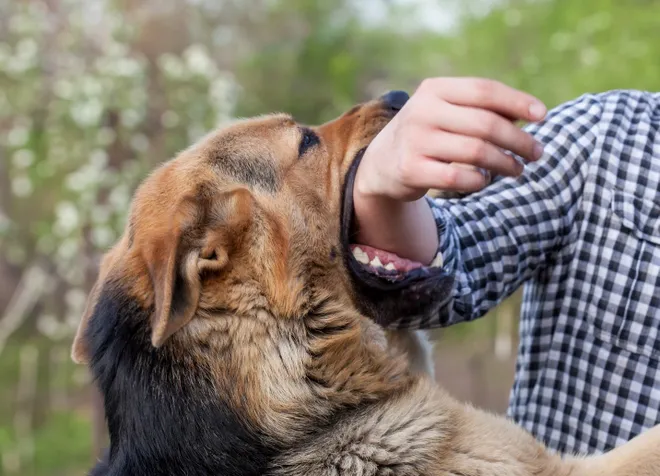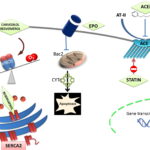Dog bite wounds can range from mild to severe and may result in various complications. Whether the injury is caused by a pet dog or a stray, understanding how to treat, care for, and prevent dog bites is essential for reducing the risk of infection and promoting quicker recovery. This guide provides an in-depth look at dog bite wounds, the appropriate first aid treatment, common symptoms to watch out for, and preventive measures to avoid such incidents.

Understanding Dog Bite Wounds
A dog bite is an injury caused when a dog’s teeth penetrate human skin. The severity of the wound can depend on several factors such as the size of the dog, the force of the bite, and the area of the body affected. Dog bites are categorized into puncture wounds, lacerations, and abrasions, each requiring different levels of medical attention.
Causes of Dog Bites
While dogs may bite for various reasons, including fear, pain, or territorial aggression, most bites occur when the animal feels threatened or startled. Children and individuals who are unfamiliar with dogs are at a higher risk of being bitten due to their tendency to provoke or approach unfamiliar dogs in an unsafe manner.
Symptoms of a Dog Bite Wound
Recognizing the symptoms of a dog bite wound early on is crucial to ensuring timely treatment and preventing complications. Common signs of a dog bite include:
- Pain and swelling around the bite area
- Redness or warmth at the site of the bite
- Bleeding from the puncture or laceration
- Bruising or signs of tissue damage
- Fever and chills, which may indicate an infection
- Pus or drainage from the wound (a sign of infection)
In some cases, more severe symptoms may arise, such as deep puncture wounds, severe bleeding, or signs of infection spreading to nearby areas.
First Aid for Dog Bite Wounds
Immediate treatment of a dog bite wound is vital to minimize the risk of infection and complications. Follow these steps for initial care:
Step 1: Clean the Bite Area
- Wash the wound thoroughly with soap and water to remove any dirt or bacteria. This is the most crucial step in preventing infection.
- Use a clean cloth to gently pat the area dry.
Step 2: Stop the Bleeding
- Apply gentle pressure to the wound with a clean cloth or sterile gauze. Most minor bites will stop bleeding within a few minutes.
- For deep puncture wounds that do not stop bleeding, seek immediate medical attention.
Step 3: Disinfect the Wound
- Apply an antiseptic to the bite area to kill harmful bacteria and prevent infection.
- Avoid using alcohol or hydrogen peroxide directly on the wound, as these can damage tissue.
Step 4: Protect the Wound
- After disinfecting, apply a sterile bandage to cover the wound and keep it clean. Change the dressing regularly to monitor for infection.
Step 5: Seek Medical Attention
- If the bite is deep, the wound shows signs of infection, or the dog’s rabies status is unknown, seek medical attention immediately. Medical professionals may administer a tetanus shot or prescribe antibiotics to prevent infection.
When to Seek Medical Care
While minor bites can often be treated at home, there are situations where medical attention is necessary. These include:
- Severe bleeding that does not stop
- Deep puncture wounds or large lacerations
- Bites on the face, hands, or joints, as these areas are more prone to complications
- Signs of infection, such as pus, increased redness, or warmth
- A dog bite from an unknown or unvaccinated animal, which may require rabies post-exposure prophylaxis (PEP)
- Symptoms of shock, including dizziness, fainting, or rapid heart rate
Risks of Dog Bite Infections
A dog bite wound is susceptible to bacterial infections, the most common of which include:
1. Pasteurella multocida
This bacteria is often found in a dog’s mouth and can cause severe infections if introduced into a wound. Symptoms of infection from Pasteurella include swelling, redness, and pain.
2. Staphylococcus aureus
Another common bacteria, Staphylococcus aureus can lead to severe abscesses or cellulitis if not treated properly. The infection may cause pus-filled bumps, fever, and intense pain.
3. Rabies
Rabies is a viral infection that can be transmitted through bites from infected animals. Symptoms of rabies include fever, headache, agitation, and confusion. Rabies is almost always fatal if not treated with post-exposure prophylaxis (PEP) before symptoms appear.
4. Tetanus
Although rare, tetanus can develop from a dog bite if the wound becomes contaminated with dirt or debris. It causes painful muscle spasms and stiffness and requires immediate treatment with a tetanus shot.
Prevention of Dog Bite Wounds
Preventing dog bites involves understanding canine behavior and taking steps to ensure safe interactions between dogs and people. Here are some essential tips:
- Supervise interactions: Always supervise children around dogs, especially unfamiliar ones.
- Respect dogs’ space: Never approach a dog that is eating, sleeping, or protecting its territory.
- Proper training for pets: Ensure that your dog is well-trained and socialized to minimize aggressive behavior.
- Vaccinate pets: Keep your dog’s rabies vaccination up to date to prevent the spread of rabies in case of a bite.
- Educate the public: Promote awareness of how to safely interact with dogs and read their body language.

